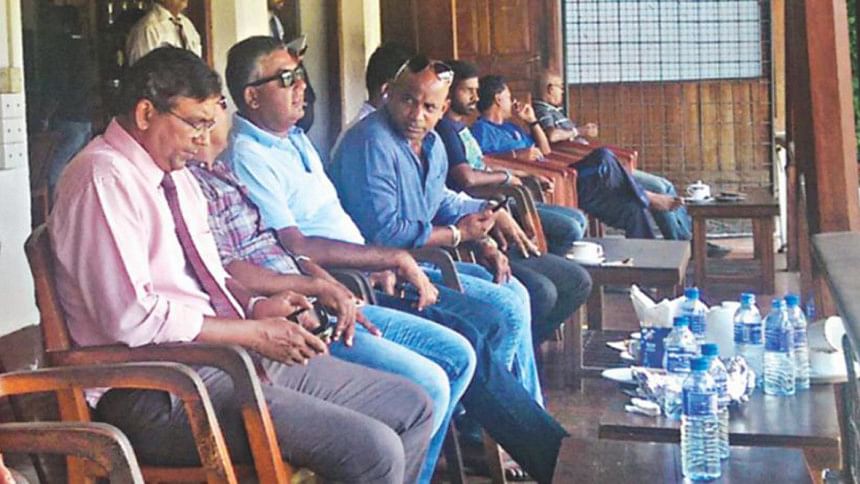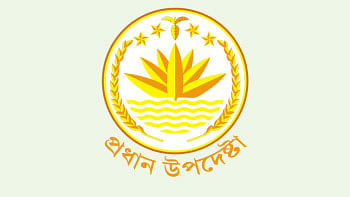Postcard from the island

LUMINARIES AT THE CCC
Much like the P Sara Oval where Bangladesh won their first Test match against Sri Lanka in the Tigers' hundredth Test on Sunday, the venue for their one-day warm-up match -- the Colombo Cricket Club Ground -- was an old ground steeped in history. Whereas the P Sara is the only ground in the subcontinent where Sir Donald Bradman played a match, in the Clubhouse walls of the CCC hang paintings of England captain Douglas Jardine and the terror-inducing Harold Larwood, two men who curbed Bradman's run spree in the 1931-32 Ashes, otherwise known as the Bodyline series. The England skipper and fast bowler played here on MCC's tour in 1934.
Not being an international ground anymore -- it hosted three Test matches in the 1980s -- the CCC provides a rare opportunity to watch the action from ground level just beyond the boundary ropes, just as you would a neighbourhood cricket match at the Abahani ground, for example. Only here, at least 12 of the players participating in the match will be in the upcoming ODI series starting in Dambulla on March 25. Yet there were only a few spectators inside the ground itself, while a few hundred more pedestrians stopped outside the wire mesh fence on the footpaths of the Independence Avenue and Maitland Place, the two roads that flank the ground.
But off the field, and especially in the Clubhouse at the opposite end of the ground from the scoreboard, the action was at least as eye-catching. Sri Lanka cricket royalty was flitting in and out. Roshan Mahanama had a long chat with his old teammate and current Bangladesh coach Chandika Hathurusingha by the boundary and was soon joined by Romesh Kaluwitharana, or 'Little Kalu' as he was called by the late television commentary legend Tony Greig. Kaluwitharana is a national selector now and after bidding goodbye to Mahanama, he took a seat beside the current chief selector and, more notably, the other half of the marauding opening pair that terrorised bowlers all across the world -- Sanath Jayasuriya.
Soon, they were joined by Sri Lanka strategic consultant Asankha Gurusinha and for an hour you had the top three that won Sri Lanka the 1996 World Cup. It was a pity that skipper Arjuna Ranatunga, batting superstar Aravinda de Silva and Hashan Tillakaratne were missing. Then we would have had the top seven. Even World Cup winning seamer Chaminda Vaas, former national bowling coach and current assistant coach of the Under-19 team, stepped in for a few minutes to watch the action out on the field. None, however, wanted to talk and declined requests for interviews in the most polite ways.

TALES OF RANATUNGA
For the cricket lover there was more at the Clubhouse than former stars. There were the tales and this time they were not held back. At the bar a middle-aged gentleman in pin-striped trousers was quietly sipping his drink till he spotted a few Bangladeshi journalists. He then offered his heartiest congratulations for Bangladesh's win, and said that not utilising Hathurusingha was one of Sri Lanka cricket's big losses.
It turned out the man was Kalinda Indatissa, an interim committee member of Sri Lanka Cricket from July 2010 to July 2013 and a man who, as a practising lawyer in the 1990s and 2000s, was present during some of the more litigious phases of the country's cricket. He was almost ready to fly out to Australia during the Muttiah Muralitharan-Darrel Hair saga. He was also one of the three lawyers representing Ranatunga and De Silva in the match-fixing inquiry in London in 2000-2001.
According to him, Ranatunga was the man who changed the game in the island. He told a few tales of the man's greatness, from the difficulties he faced as a slightly rotund youngster breaking into Sri Lankan cricket in the early eighties to the stern but fair leader he became in the 1990s.
But the one that stood out was a story about a certain Test during which Ranatunga, a fair time after his retirement, was sitting in one of the hospitality boxes. He was frustrated by the opposition piling on runs against his team, and told the then team manager exactly what field should be set and which bowler to be used. The story goes that the manager relayed the information and a few overs later, the partnership was broken by the trap that Ranatunga set.
"Such was his reading of the game," Indatissa said with a wistful smile.

 For all latest news, follow The Daily Star's Google News channel.
For all latest news, follow The Daily Star's Google News channel. 



Comments